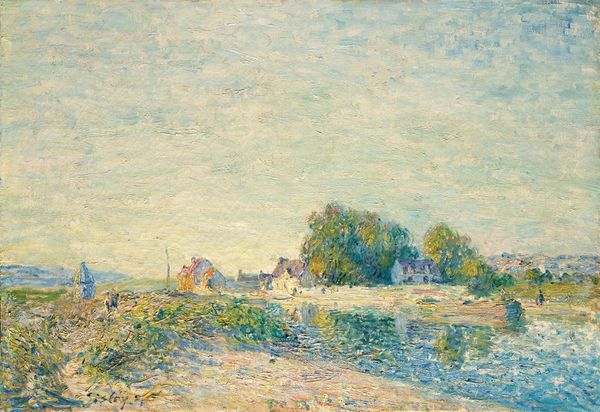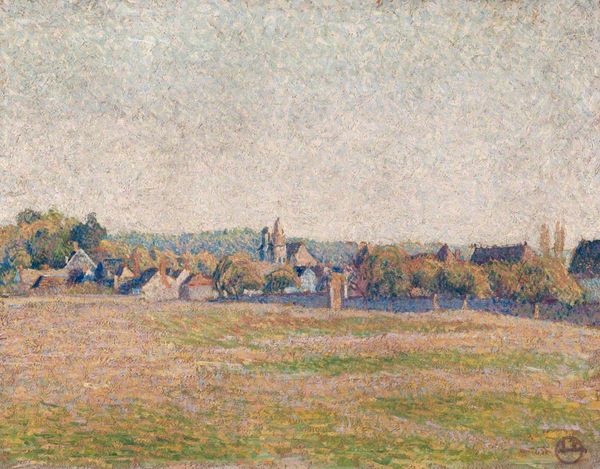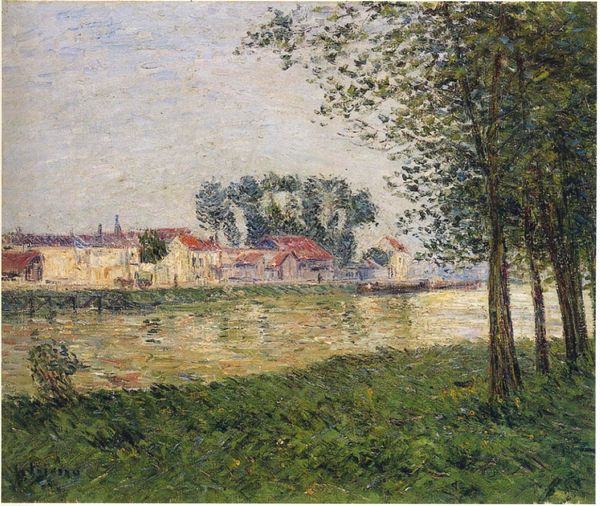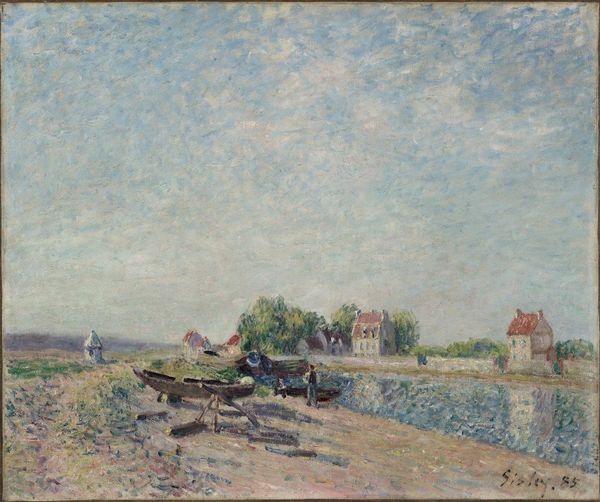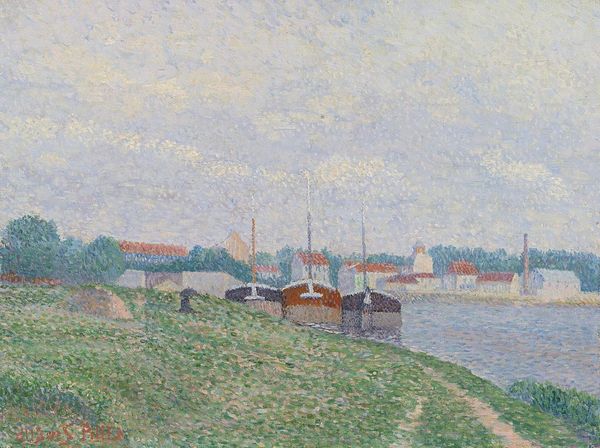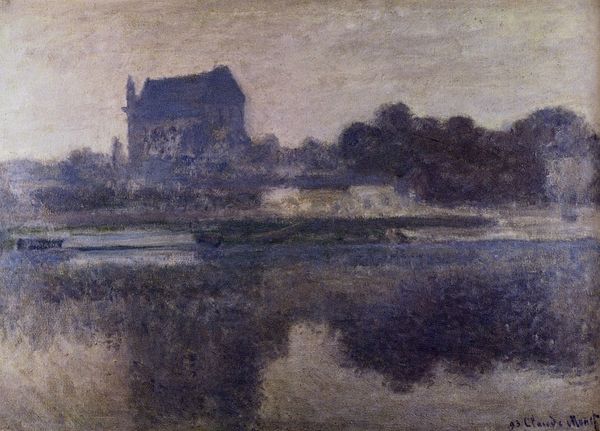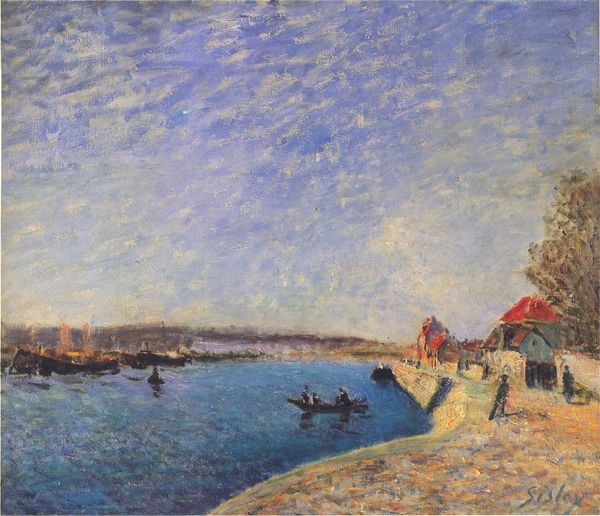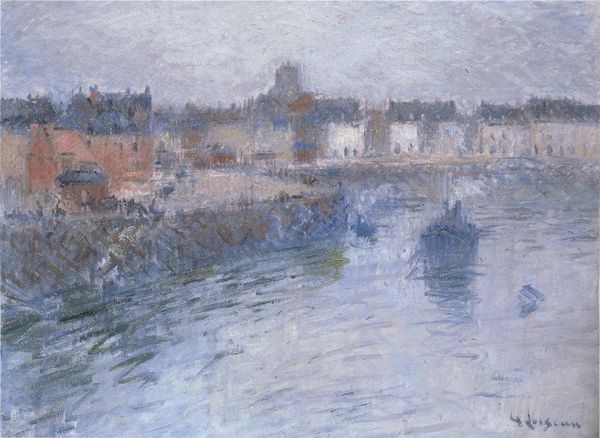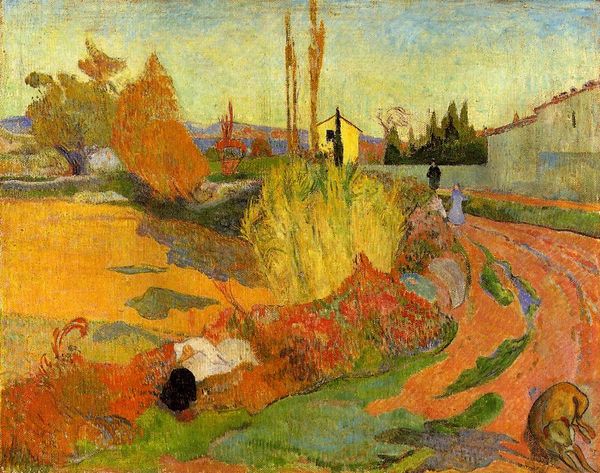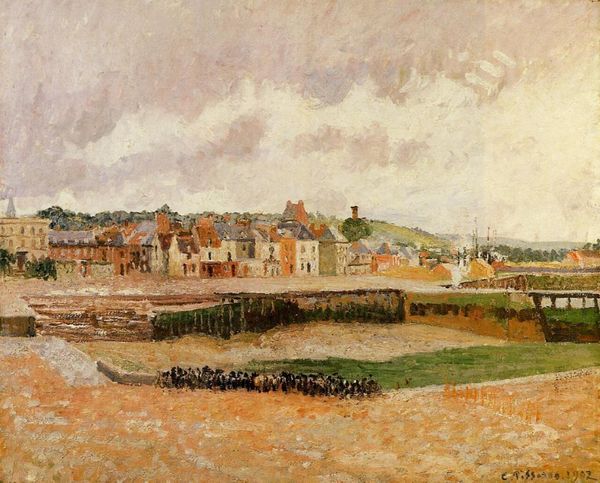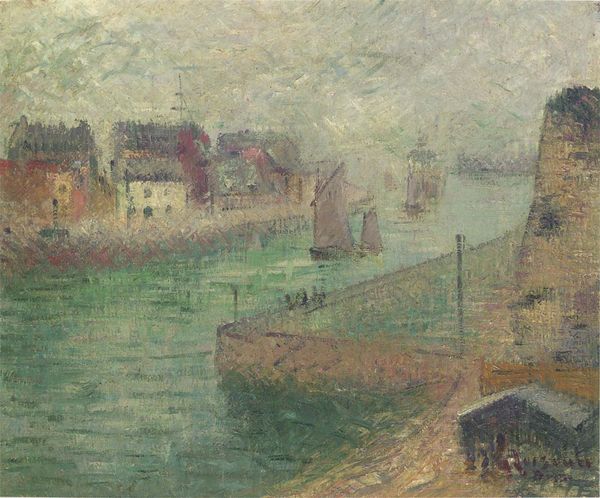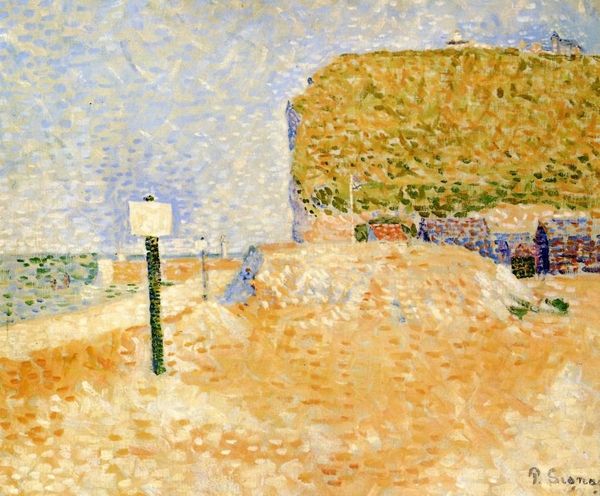
painting, oil-paint
#
painting
#
impressionism
#
oil-paint
#
neo-impressionism
#
landscape
#
impressionist landscape
#
oil painting
#
geometric
#
post-impressionism
Copyright: Public Domain: Artvee
Georges Seurat created this painting of Port-en-Bessin using oil on canvas, during the late 19th century. Here, Seurat applies his signature pointillist technique to a scene that seems, at first glance, rather conventional. But look closer, and you can see the subtle ways that he’s challenging the art establishment. This was painted in France, a time of rapid social and economic change, with industrialization shifting traditional ways of life. The art world was dominated by the Académie des Beaux-Arts, which favored historical or allegorical subjects. Seurat, though, like many of his contemporaries, turns to modern life, depicting a working harbor. The painting’s meaning shifts when we consider the institutional context in which it was made. Seurat’s work was initially rejected by the official Salon, leading him and others to form independent exhibiting societies. These artists believed that academic art had nothing to say about modern life. Understanding art requires attention to these kinds of historical details, through archive research, scrutiny of exhibition records, and analysis of critical debates. The meaning of art is never fixed, but evolves with the changing contexts in which it’s viewed.
Comments
No comments
Be the first to comment and join the conversation on the ultimate creative platform.
